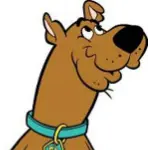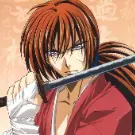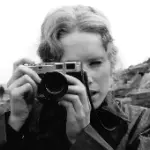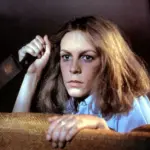DCEU's latest masterpiece, "The Flash," has finally met with the audience on the big screen. It's hard to believe that this superhero film, released in 2023, actually had its initial release date announced in March 2018, which was just the second year after the release of "Justice League."

What surprised many in the industry was that, despite the strong scent of failure surrounding the entire development process of "The Flash," Warner Bros. remained steadfast in greenlighting the film. However, after watching the movie, it seems that I now understand Warner Bros.'s persistence.

DC Comics, founded in 1934, introduced the world's first superhero character, Superman, in 1938, and the following year, they created the world's first superhero character without superpowers, Batman.

As of today, DC Comics has grown into a major superhero comic book publisher with numerous superhero characters, including Superman, Batman, Wonder Woman, The Flash, Green Lantern, and Constantine, along with countless superhero teams.
DC Comics, acquired by Time Warner in 1969, has been at the forefront of adapting superhero properties into live-action films and TV series. Whether it's the 1949 television series "Batman and Robin" starring Adam West and Burt Ward, the 1974 series "Wonder Woman" with Linda Carter in the lead role, or the Superman film series of the 1970s starring Christopher Reeve, or the Batman film series created by Tim Burton in the 1990s, DC's adaptations have been a lucrative asset for Warner Bros.

With last year's internal management restructuring at Warner Bros. and the appointment of "Guardians of the Galaxy" series director James Gunn and producer Peter Safran as co-CEOs of DC Films, it marks the end of the old "DCEU" era that began with "Man of Steel." In the new DC Extended Universe reboot plan, characters like Batman, who was previously played by Ben Affleck, Wonder Woman, portrayed by Gal Gadot, and Henry Cavill's version of Superman will all undergo recasting to fit the age requirements for their characters in the new era of DC film and television storytelling.
The fate-ridden "The Flash" film, after undergoing numerous troubled productions, ultimately serves as the definitive answer to the challenge of how to say goodbye to the commercially unsuccessful yet fan-beloved old DCEU and lay a solid foundation for the future of the new DC Extended Universe. The movie's plot is based on DC Comics' major event, "Flashpoint." In the original comic storyline, the Flash, tormented by the inability to save his mother from being killed by a thug when he was a child, accidentally breaks through time barriers while running at super-speed, traveling back to the past.
He manages to save his mother but, in the process, changes the entire world. In this new world, the well-known superheroes have completely different life experiences. Superman's Kryptonian spacecraft crashes in Metropolis, and government agencies secretly hold the infant Kal-El captive.
In this storyline, the victims of the unexpected shooting in Gotham City become Bruce Wayne. In her profound grief, Martha Wayne transforms into the Joker, and Thomas Wayne, who, in his immense sorrow, becomes the ruthless Batman.
In this world, Green Lantern Hal Jordan doesn't exist, and a prolonged and devastating world war occurs between Atlantis under the leadership of Aquaman and the Amazon tribe under Wonder Woman's rule.
Even with all of Barry Allen's efforts, he cannot avoid the harsh reality that this world is destined for destruction. Guided by Thomas Wayne's Batman, Barry Allen, the Flash, ultimately makes a desperate decision to once again travel through time and prevent the "Flashpoint" version of himself from altering the past. As a result, the world is set back on its original course, and Barry Allen undergoes significant personal growth in the process.

As one of the most significant comic book events of the new century, the event holds immense importance and influence in DC Comics history. It has become an eternal classic in the hearts of countless comic book fans and was quickly adapted into an animated film by Warner Bros. Now, the movie "The Flash" before us can be said to have evolved from this event while incorporating innovative elements drawn from various classic DC film and television works.
The film's story picks up right after "Zack Snyder's Justice League." At this point, the "Justice League" has started to take shape and has become an important superhero organization dedicated to maintaining peace and safety on Earth. The naturally lively "Flash" becomes an on-call battlefield savior within the "Justice League."

The line, "No matter how fast you run, you can't save everyone, including people who are important to you," spoken by the villain Reverse-Flash to Barry Allen, is not only a pivotal moment in the original "Flashpoint" storyline but also the primary reason prompting the Flash to time travel and save his mother.
In the movie, the Flash faces the cruel reality of his mother's death and his father being wrongfully convicted. After unexpectedly discovering his ability to enter the "Speed Force," he finds Batman, Bruce Wayne, who shares a similarly tragic childhood. The Flash excitedly explains that by time traveling, he can not only save his mother but also alter the tragic childhood of Bruce Wayne. However, Bruce Wayne responds with a meaningful statement – he warns against trying to change the past, as the past tragedies have shaped who they are today. Altering the past with seemingly minor actions could result in catastrophic events, much like the "butterfly effect."

Indeed, as portrayed by Ben Affleck's Batman, Barry Allen's seemingly small act of placing ketchup into his mother's shopping cart led to a world-altering change. In this entirely new timeline, Barry Allen never lost his mother, and he grew up just like any normal child, which means he didn't undergo the mysterious chemical exposure and a lightning strike that would have turned him into the Flash during the investigation at the police station. In this world, superheroes like Aquaman, Wonder Woman, and Cyborg simply do not exist.
The worst part is that General Zod, who followed Supergirl to Earth, is about to carry out his plan to destroy the world in this world without Superman. The fate of this world depends on the efforts of the Flash and others to save it. Barry Allen, torn between the past and the future, gains and losses, family and the world, faces a difficult choice. And the mysterious villain who keeps appearing in the "Speed Force" holds a hidden identity that awaits discovery. These questions and more are left for the audience to explore in the movie!

After Marvel's "multiverse madness," many moviegoers might be a bit fatigued by the concept of a multiverse. Superhero films have also established fairly standard narrative and plot patterns by now, putting pressure on "The Flash."
Fortunately, the creative team presents a coherent story filled with genuine emotions within the confines of a limited narrative space. Throughout the movie, the scenes where Barry Allen reunites with his mother after enduring childhood tragedy and his resolute choices in the face of responsibility at the story's end are truly moving and may bring tears to your eyes.

Both last year's "The Batman,” "Guardians of the Galaxy Vol. 3," and now "The Flash" prove that despite two decades of unprecedented development in superhero films, there is still untapped potential for further innovation. At the core of this potential is the injection of emotional elements, as simple explosions and empty special effects are no longer sufficient to captivate audiences.
In fact, if you look beyond the title "The Flash," the film could have been named "Batman: The Chaotic Multiverse." Andrés Muschietti includes many homage scenes and classic character Easter eggs in this movie, such as George Reeves' Superman, the original Flash Jay Garrick portrayed by John Wesley Shipp, Christopher Reeve's Superman, and Helen Slater's Supergirl, Adam West's Batman, and the scene of Nicolas Cage's Superman fighting a giant mechanical spider.
Fans are most excited about the successive appearances of multiple generations of Batman in this film.

First up is Ben Affleck's Batman. When the Dark Knight once again dons his upgraded suit and Batcycle to chase criminals on the streets of Gotham, when the massive Batmobile, first seen in "Zack Snyder's Justice League," makes a return, and when Bruce Wayne imparts life lessons to the young Barry Allen like a mentor, it's hard not to feel the weight of Ben Affleck's journey through the ups and downs of life, despite the personal challenges he faced while playing Batman, he still mustered the courage to bid a final farewell to the character in this film.
More than thirty years later, Michael Keaton's Batman returns to the big screen. The aged Keaton version of Batman is living in retirement, and when he utters the line "Gotham is the safest city in the world," it's hard not to recall that this particular version of Batman already defeated his arch-nemesis, the Joker, in the 1989 film, and later took down the Penguin in the sequel.
"The Flash" also pays homage to this version's Joker. The Joker prop that young Barry finds in the Batcave is the same one that Keaton's Batman took from the Joker at the end of the 1989 film. Keaton's Batman from that era faced many limitations due to the technology and production costs at the time. The imposing, mysterious-looking Batman suit actually severely restricted the actor's movements, and Michael Keaton reportedly had a tough time in the role.
Returning to the Batcave, audiences can see that the grizzled Keaton Batman has made various upgrades to his suit and equipment, even managing to create a set of seven suits. In order to provide an authentic experience, the production team recreated the classic Batcave setting on a massive soundstage, matching the original design from that era. This decision is said to have left Michael Keaton in awe when he first stepped onto the set.

The George Clooney version of Batman, who appears at the end of the film, is known for his portrayal of Batman in the 1997 film "Batman & Robin." This movie, which Warner Bros. had high hopes for at the time, was a major disappointment. It featured a campy plot, cheap and flashy costumes and props, and the infamous "bat-nipple" Batsuit. The film's terrible reception led Warner Bros. to temporarily shelve plans for the Batman IP. However, based on the ending of "The Flash," it's suggested that George Clooney might continue to play Batman in the future of the DC Extended Universe.
In summary, "The Flash" cannot carry the title of "the greatest superhero movie of all time," but it can certainly be considered one of the best superhero movies since "Avengers: Endgame." Despite its limited narrative space and familiar plot structures, the film focuses on emotions and nostalgia, delivering a fleshed-out portrayal of the Flash, who learns to grow through pain and take responsibility. The cameos of multiple Batman and Superman versions add a strong nostalgic element to the movie. Even though the concept of the multiverse has been explored in several superhero films and TV series, "The Flash" offers a unique interpretation of the multiverse, which brings a fresh perspective. In light of the heartfelt storytelling, the film's shortcomings in terms of special effects become less significant.

Lastly, it's worth mentioning that while "The Flash" on the big screen runs for less than two and a half hours, the initial cut of the film was a whopping four hours long. In this early cut, audiences would have seen various characters, including the Linda Carter version of Wonder Woman, Grant Gustin's Flash, the TV show's versions of the Penguin and the Joker, and Marlon Brando's Jor-El from Reeve's "Superman" films, among others.
So, could we anticipate a future cut of "The Flash" that includes more storylines and characters for the audience to enjoy?










































Share your thoughts!
Be the first to start the conversation.